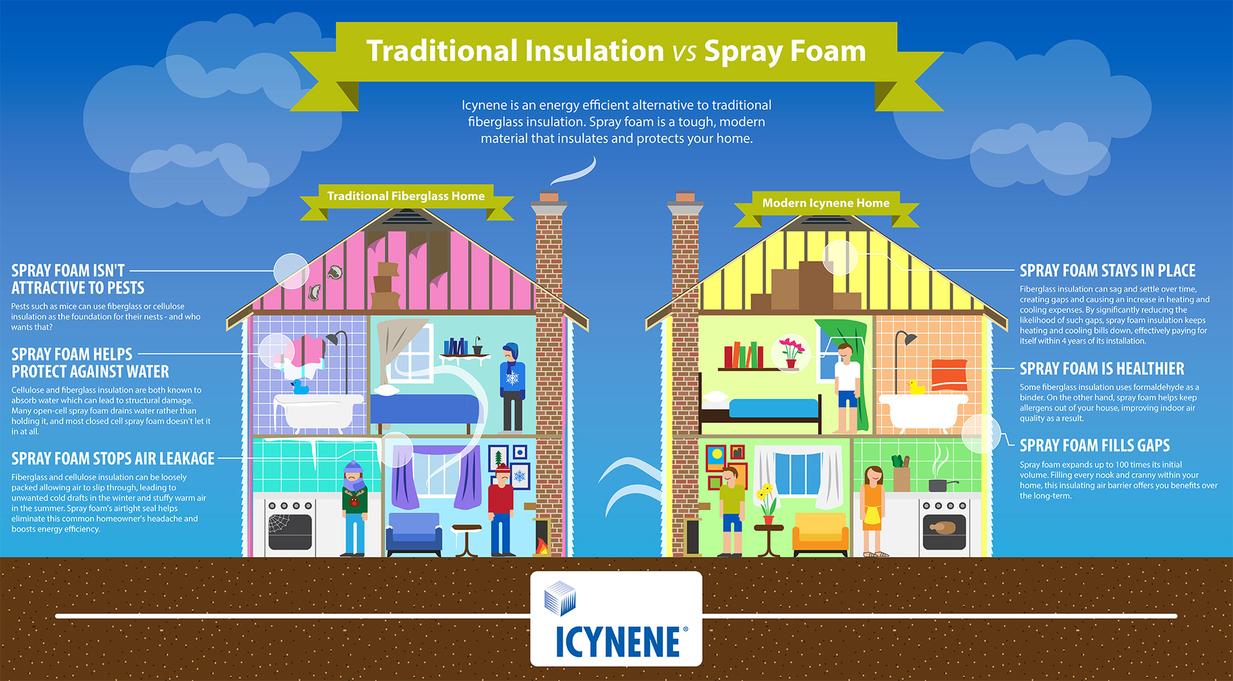
EDUCATING HOMEOWNERS HOW TO MAKE THEIR HOME SUSTAINABLE, HEALTHY AND ENERGY-EFFICIENT WITH HOME ENERGY UPGRADES
Making Sense of Insulation Choices
Choosing the quantity and type of insulation are the two most important decisions that affect the comfort and energy efficiency of a house. It is the most important phase of implementing the principles of building science.
Like the foundation and framing, insulation is a fundamental component, incorporated into the shell of the building during construction.
Insulation defines the thermal barrier of the house:
This is the pathway for heat loss (or, we hope, for heat containment).
- We typically focus on the R-Value of insulation: that is, its inherent resistance to the flow of heat through the building envelope.
- These numbers can be somewhat deceptive and although R-Value is a key consideration, it is not the only one.
- How effectively insulation blocks the flow of air, and moisture, through wall and ceiling cavities is another.
- In this regard, some types of insulation perform better than others.
Not very long ago, builders insulated houses almost by rote. The job usually meant unfurling rolls of fiberglass batting and stuffing them into wall and ceiling cavities.
Fiberglass batts are still the most widely used type of insulation in the U.S. Inexpensive and available just about anywhere, fiberglass batts are seemingly easy to install. This insulation is effective only when installers are fussy about the details (keeping the batts continuous and seamless). And, unfortunately, most of the time they aren’t.
Spray-in foams have very good R-Values; up to 6.5 per inch, and they do an exceptionally good job of air-sealing. Foams are typically urethane-based, but a new type of urethane is made from soybean shells.
Blowing agents, which fluff up the ingredients as they are applied, vary but ozone-destroying compounds that were used in the past have gradually been weeded out. Some are foamed with water.
Air-sealing is particularly important in the wall between an attached garage and the house so unburned hydrocarbons and other indoor air contaminants are not allowed to filter into the house.
If air pressure inside the house is negative, pollutants will be pulled into the house every time the door is opened.This is most likely in Northern climates because a car might be started in the garage and allowed to warm up. If the driver goes back and forth into the house, pollutants follow.
All too often the garage is attached to the kitchen where the kids are. Spray foam insulation is the best product to stop air movement through walls.
Spray foams are available in both low-density, open-cell and high-density, closed-cell varieties that are applied with specialized spray equipment.
Foam expands on contact (open-cell foams increase 100-fold in volume, high-density foams about one-third that much), so they are both excellent at sealing even tiny gaps.
Spray foams are especially effective around band joists, an area that’s tough to insulate properly with more conventional products.
Insulation is the key to energy conservation, a cornerstone of green building.
Poorly insulated houses waste energy, and most heating and cooling equipment runs on fossil fuels, which are not sustainable over the long haul.
Well-insulated houses not only save energy, thus lowering operation costs, but also keep people more comfortable.
Well-insulated, well-sealed houses need effective ventilation.
Spray foam Insulation is a trade that most people aren’t familiar with. Here, at EnergyPro Insulation, we promise to never unfairly take advantage of someone who needs our services. We pride ourselves on our honesty and integrity and we firmly believe that you’ll see the difference when you choose our company. We’ve also been family- owned and operated from the start.
